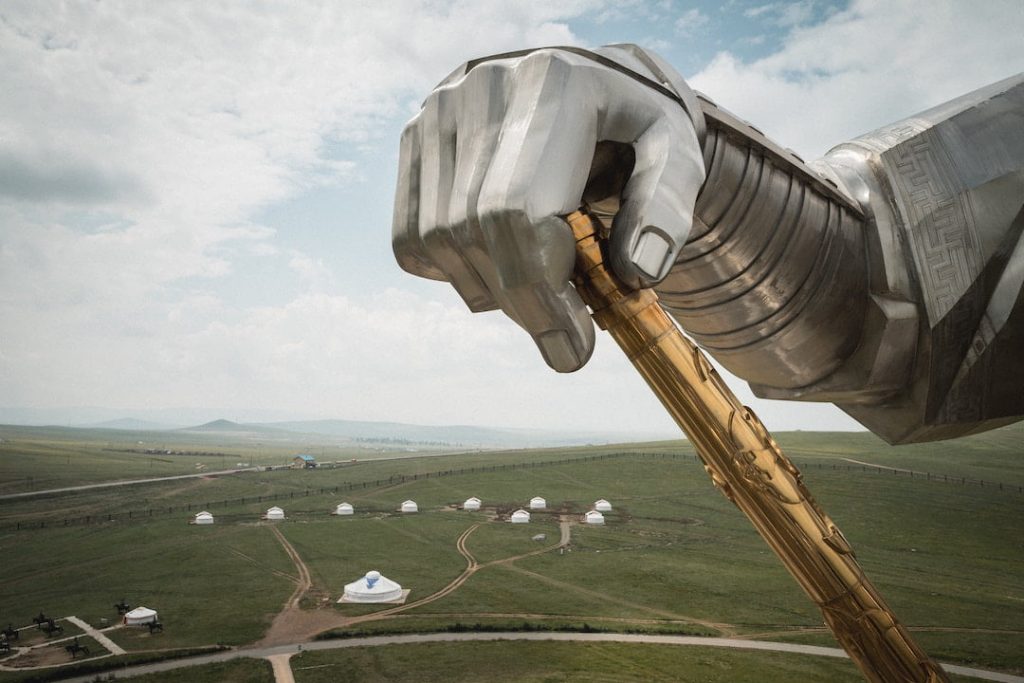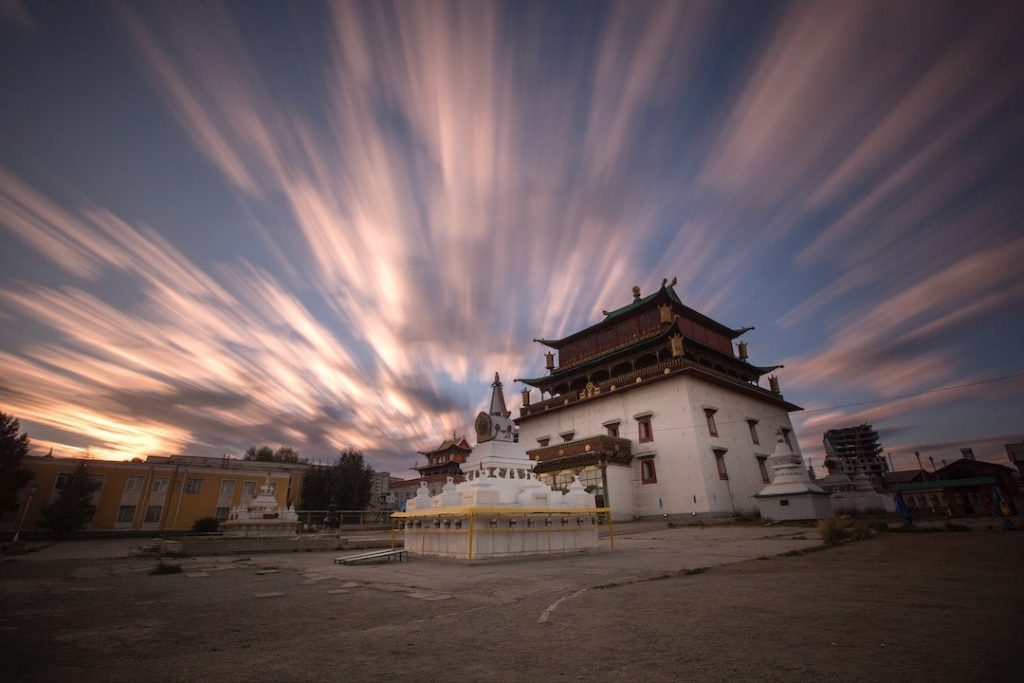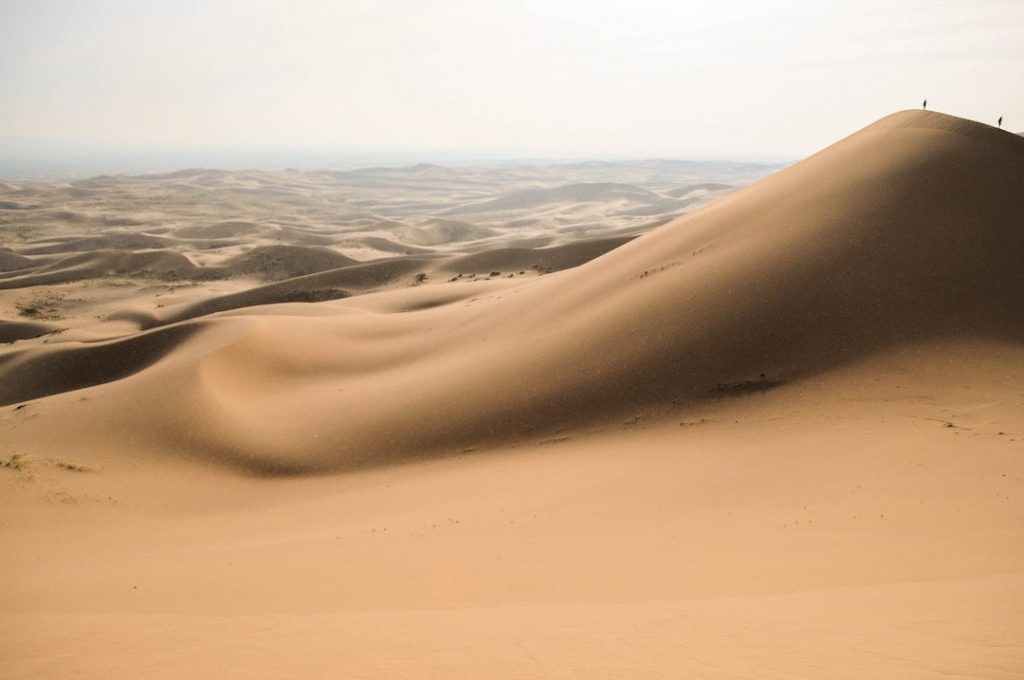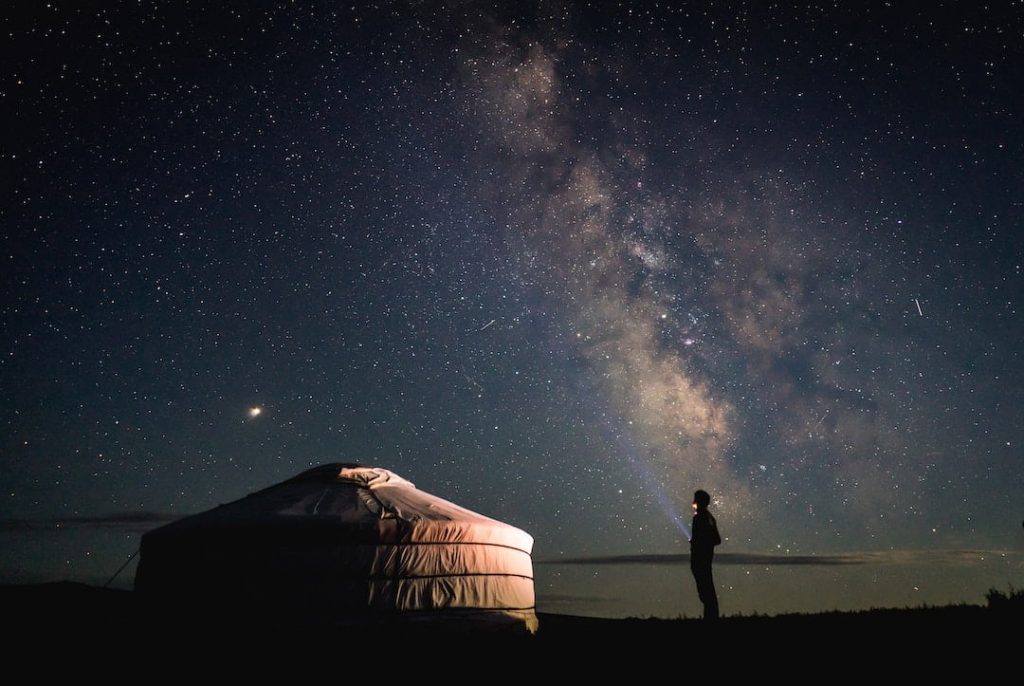Vast, overwhelming, and utterly magnificent, Mongolia is an adventurer’s dream. Dinosaur fossils dot the landscape and nomadic herders roam the steppe as they have for centuries. Unfathomable expanses of nothingness give way to snow-capped mountains, electric-blue lakes, shifting desert, and imposing sand dunes. Some areas are so remote, you could drive for days without seeing a single sign of civilisation.
If you’re looking for a destination that’s truly off the beaten path, a place that’s still largely untouched by mass tourism and packed with barely-seen natural wonders, few other countries can rival Mongolia.
Where to go in Mongolia
Home to some of the country’s most spellbinding landscapes and must-see highlights, Central Mongolia and the Gobi Desert are the perfect regions to explore as a first-time visitor — especially if you’re planning to spend a week or two in the country.
Northern Mongolia, specifically Lake Khövsgöl, is another popular destination, so you may want to consider adding this region to your Mongolia itinerary if you have more time to spare.
Western Mongolia sees far fewer visitors due to its remote locale and distance from Ulaanbaatar; however, it is home to some of the country’s most spectacular scenery, including the Altai Mountains.
The east is the most remote and least-visited area in Mongolia, and venturing to this region is a challenge for even the most intrepid travellers.

Getting around Mongolia
Independent travel is tough in Mongolia. Key attractions are staggeringly far apart, infrastructure is still relatively underdeveloped, and roads can be treacherous. The limited public transport system only connects the major centres, and, thanks to those aforementioned risky roads, car rentals aren’t advised.
Since the typical backpacker style of travel won’t fly here, your best bet is to choose one of the following options: hire a driver and organise your travel through a local ground operator, or join a group tour.
Highlights of Central Mongolia and the Gobi Desert
1. Ulaanbaatar
Regardless of where you’re arriving from, Ulaanbaatar — the country’s sprawling, industrialised capital — will be the starting point for your Mongolian adventure. The city has been expanding rapidly in recent years: cranes and construction sites dominate the cityscape, and more than half of the country’s 3 million residents call the chaotic capital home. Set aside some time to explore the National Museum of Mongolia and the 19th-century palace of Bogd Khaan before venturing into the Mongolian countryside.

2. Yol Valley
Characterised by jagged cliffs, narrow canyons, and thick corridors of ice, the scenery in Yol Valley stands as a stark contrast to the Gobi’s colossal sand dunes and immense expanses of empty desert. It’s a great spot for moderate hikes (keep your eyes peeled for ibex, yaks, and bearded vultures), and it’s also one of the few places where you can catch a glimpse of glaciers — even during the summer months.
3. Bayanzag (the Flaming Cliffs)
Most visitors stop at Bayanzag (or the Flaming Cliffs, as it’s known to English-speakers) to see the fiery red rock formations, but there’s another reason this iconic Gobi site is a must-see highlight on Mongolia’s tourist route: Bayanzag is one of the most famous palaeontological sites in the world. It was at this site that Roy Chapman Andrews and his team of scientists discovered the world’s first-ever nest of dinosaur eggs in the 1920s.
These desert cliffs glow with an ethereal red-orange light at sunset, but you can enjoy the raw beauty of the place any time of the day.
4. Khongoryn Els Sand Dunes
Stretching over 100 kilometres and standing up to 300 metres high, Khongoryn Els are some of the largest and most spectacular sand dunes in Mongolia. Climbing to the top of the dunes is a challenge: the ascent takes approximately 45 minutes to one hour, and it’s an exhausting uphill battle all the way to the summit. You’ll be rewarded with sensational views from the peak, though, so be sure to add this experience to your list of Mongolia must-dos!

5. Karakorum and Orkhon Valley
Two significant historical gems can be found in this area of the country: Mongolia’s oldest Buddhist monastery (Erdene Zuu Khiid) and the ruins of Karakorum, the ancient capital of the Mongol Empire. West of Karakorum, you can explore Orkhon Valley’s many natural wonders, marvel at the stunning 20-metre high Ulaan Tsutgalan waterfall, and pay a visit to nearby Tövkhön Khiid, a secluded hilltop monastery.
6. Gorkhi-Terelj National Park
Gorkhi-Terelj National Park is one of the country’s premier destinations for a range of adventure activities, from hiking to trekking, rock climbing and horse riding. Explore the park’s pine-covered mountains by horseback or ATV, or traverse its sprawling valleys and craggy hilltops by foot. Plenty of ger camps are available if you want to spend a few nights here, and one of Mongolia’s most iconic landmarks, the gargantuan Genghis Khan Statue Complex, is situated nearby on the outskirts of the park.

Top experiences in Mongolia
- Stay with a nomadic family. Staying in a family ger (a traditional nomadic style of housing) is an essential part of travelling in Mongolia — and it’s likely to be one of the most memorable parts of your time in the country. Share a cup of milk tea with your hosts, try airag (fermented mare’s milk), and help out with daily chores — this is where you can fully immerse yourself in the traditional way of life and live as the nomads do. If you stay in a ger with a family, you can expect basic (but comfortable) accommodation: these types of gers are typically outfitted with nothing more than a few single beds, a small table and chairs, and a wood-burning stove.

- Go horse trekking. Horses are an integral part of peoples’ daily lives in Mongolia, and there’s no better way to experience the country’s incredible vistas than by horseback. Plus, horses can take you to some incredible places that you wouldn’t be able to see otherwise! Gorkhi-Terelj National Park and Hustai National Park are two of the country’s best horse trekking destinations, but you can try your hand at this activity virtually all over the country.
- Experience Naadam Festival. If you’re travelling to Mongolia around mid-July, Nadaam, one of the largest and best-known festivals in Mongolia, is a must! This one-of-a-kind celebration brings together the country’s best athletes to compete in three traditional games: archery, horseback riding, and wrestling, but plenty of other events and activities — including traditional dance performances — feature prominently during Naadam.
- Explore the Gobi Desert. Complete with open steppe and gers galore, no visit to Mongolia is complete without a visit to the Gobi Desert. You can fill your days here with loads of once-in-a-lifetime activities, from camel trekking to climbing sand dunes, searching for dinosaur fossils and camping next to nomadic families.

When to visit Mongolia
Summer (between June and August) is generally considered the best time of year to visit Mongolia. This is when the country’s steppes will be lush and green and skies will be blue (for the most part, at least). The country sees an average of 230 – 260 annual days of sunshine, but you’ll still need to be prepared for any type of weather.


